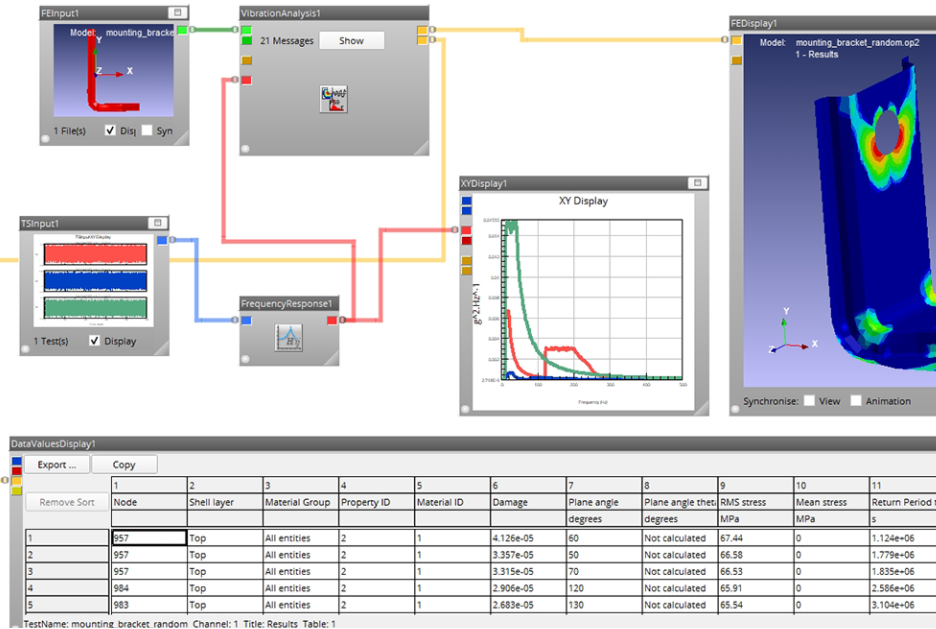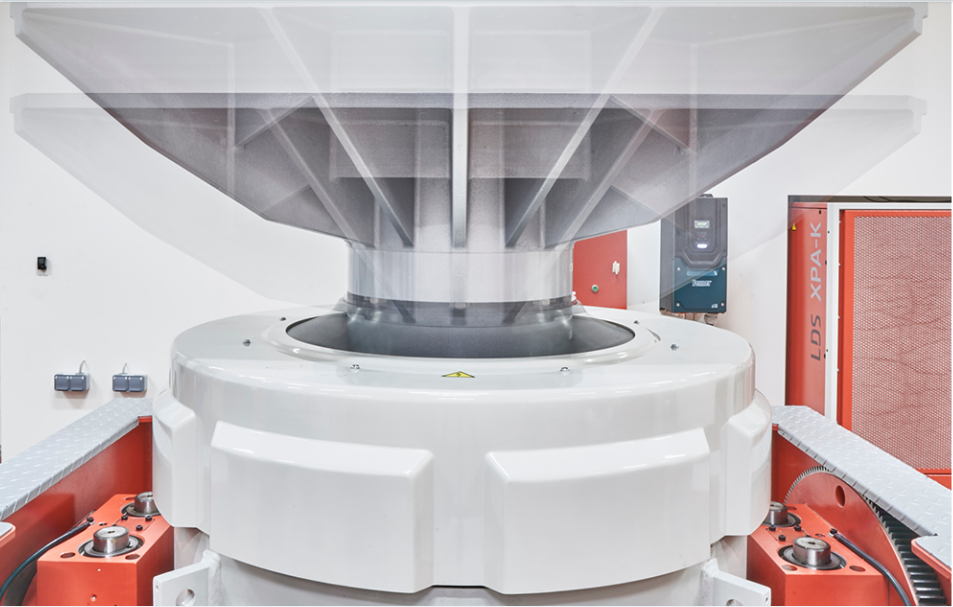The release of nCode 2021 sees improvements in functionality and performance for nCode DesignLife, nCode GlyphWorks, and nCode VibeSys encompassing 154 built-in processing and display glyphs and support for over 50 data formats. This release offers enhancements that continue to deliver data-driven confidence through accurate analysis and simulation.
Current customers on active software maintenance can gain access to nCode 2021 and full release documentation using the Support Portal.
Vehicle electrification
In support of our many customers’ focus on the electrification of vehicles and other forms of transportation, nCode 2021 includes specific capabilities to aid the post-processing of huge amounts of measured electric motor test data. A new Surface Plot glyph is ideal for torque vs speed efficiency and loss mapping for AC motor tests. The Surface Plot also has many other applications for general XYZ mapped data. Support for the reading of large .PNRF files recorded at high sample rates by HBK’s eDrive Power Analyzer has also been improved in this release.


Frequency domain fatigue
Many dynamic events that produce fatigue damage can be more efficiently analyzed in the frequency domain. nCode DesignLife includes several enhancements to speed the calculation and ease of use of multiple simultaneous and correlated PSD loads. The Frequency Response Analysis glyph’s new MultiCrossPSD option now directly converts measured multiple time history data channels into an efficient spectral histogram format (including all cross spectra) that is read straight into the vibration load provider in DesignLife. In addition, spot weld vibration fatigue is also fully supported for Abaqus, ANSYS and NASTRAN results. With this release, nCode DesignLife provides the most extensive frequency domain fatigue simulation capabilities commercially available.
Recap: In nCode 2020, nCode DesignLife introduced the unique capability to simulate sigma clipping as applied by shaker vibration tests for a more accurate estimation of damage.
Vibration Profile Design
Vibration Profile Design enables engineers to construct or accelerate a profile for shaker tests based on real world data, saving both time and money in environmental qualification and product validation. In this release, capabilities are expanded to enable the Shock Response Spectra glyph to calculate fatigue damage spectra based on acceleration, velocity or displacement responses to cater for different failure modes. Additional time series outputs for user-specified frequency points are also provided in order to better understand the dynamic response. Vibration Profile Design is an invaluable analytical addition to electrodynamic shakers such as HBK’s LDS shaker systems.

Dynamic FEA-test correlation
In order to rely more on simulation of durability tests, it is necessary to gain greater confidence using correlation with known failure modes and physical measurements. nCode 2021 expands this capability with new animation functionality to synchronize multiple simultaneous ODS (Operating Deflection Shapes) and FE Display (Finite Element) models to give clear visual comparison. The Modal Assurance Criterion (MAC) glyph can now select to use either real or complex modes for numerical comparison. Virtual Sensors placed on FE models in DesignLife can also export both acceleration and velocity time histories as well as displacement and forces, in order to directly correlate FE results with, for example, dynamic accelerometer measurements.
Recap: nCode 2020 introduced enhanced capabilities with Virtual Sensors to better correlate Finite Element predictions (FEA) and test results to minimize the need to run costly repeated experiments, and the analysis engine in nCode DesignLife could now output of forces/moments as well as displacements.
Fatigue of welds
Seam welding is a robust and durable way to join similar or dissimilar materials, but it is also susceptible to fatigue cracking. Predicting the fatigue life of welded components is therefore critical to ensuring product durability requirements are met. In this release, nCode DesignLife offers a new automated method for finding the locations of seam welds in structures modelled in FE as solid elements. This greatly simplifies and increases the accessibility to the analysis of welds in solid models when using Seam Weld or WholeLife methods.
Additional improvements in nCode 2021 and 2020 include:
- Simulation of weld fatigue is enhanced with improved automatic seam weld detection to handle more complex geometries. Walker mean stress correction is also added for seam weld analysis.
- FE Results files supported are updated including MSC Nastran 2020 .h5 and ANSYS 2020 R1 .rst. Abaqus ODB file versions 2017, 2018, 2019 and 2020 are all supported at this release.
- FE Display is now faster to switch displayed groups for models with large numbers of properties or materials.
- Video Player glyph is now fully multi-threaded for faster import of multiple simultaneous videos and optionally stores translated files for immediate re-loading.
- Customer-driven enhancements including updates to supported file formats such as binary UFF, Dewesoft .dxd and Vector MDF4.
- Simplified workspace navigation, new color schemes
- New on-line help system to easily find PDF documents and Glyph Reference Guide in HTML
- Speed improvements for getting faster results from large FE models
To speak to a local fatigue and durability expert at LEAP, please contact us here and we will discuss your fatigue analysis requirements.



